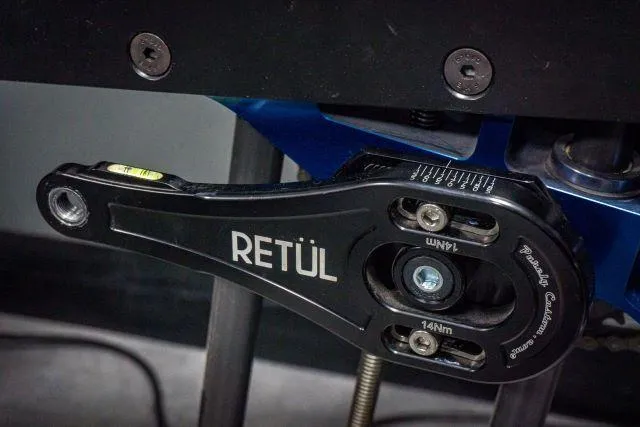
The Benefits of Short Cranks
The benefits of short cranks for road cyclists and triathletes
As a bike fitter who works with road cyclists and triathletes every week, I get asked about crank length a lot. It’s one of those details that can feel small on paper but makes a meaningful difference on the bike — especially for comfort in the aero position, knee health, and how you feel on the run after a long ride or race. Here’s a friendly, practical breakdown of why shorter cranks might be worth considering for you.
What do we mean by “short” cranks?
Crank length is the distance from the center of the bottom bracket to the center of the pedal axle. Typical road crank lengths range from around 165 mm to 175 mm (and sometimes longer for very tall riders). When I say “short cranks,” I generally mean a crank that is 5–15 mm shorter than what a rider is used to or than the historical norm for their height.
Key benefits of shorter cranks:
1) Reduced hip flexion in the aero position
One of the biggest practical advantages for triathletes and time trialists is reduced hip flexion when you’re in the aero bars. Shorter cranks lower the highest point of the pedal stroke relative to your saddle, so your hips don’t have to fold as much to get into a low, aerodynamic posture. That often translates into:
More comfort in a deep aero tuck
The ability to hold a lower torso angle without pinching your hip flexors
Better power output because you can maintain your aero position longer without discomfort
For triathletes this matters even more: less hip flexion on the bike typically reduces the amount of glute/hamstring/hip flexor fatigue and can make the first kilometers of the run feel fresher.
2) Reduced knee and hip joint stress
Shorter cranks reduce the range of motion and the peak joint angles required at the knee and hip. For riders with anterior knee pain, patellofemoral irritation, or hip discomfort, moving to a shorter crank can lower peak joint forces and reduce painful positions. Many recreational and masters riders report fewer flare-ups after switching.
3) Better clearance and reduced pedal strike
Short cranks move the pedal path slightly inward and reduce the radius of the pedal circle, which helps with cornering clearance and pedal strikes when leaning the bike. This can be especially useful for smaller riders or anyone riding tight twisty descents.
4) Easier cadence and smoother pedal stroke
Shorter cranks tend to favour higher cadences and slightly faster crank acceleration because the lever arm is shorter. Riders sometimes find their cadence becomes more comfortable and pedaling feels smoother — particularly useful in long events where consistent, efficient pedaling beats big, grinding torque bursts.
5) Aerodynamic gains (indirect)
Short cranks themselves don’t reduce drag dramatically, but because they let you get into a lower, more comfortable aero position, they can produce meaningful aerodynamic gains by allowing a smaller frontal area for sustained periods.
Trade-offs and what to watch for:
Leverage and maximal sprint torque: A longer crank provides a longer lever arm and theoretically more torque for very high-force efforts (e.g., maximal sprints). For most road races and triathlon efforts that rely on sustained power, the real-world loss is small. Sprinters who rely on maximum lever torque may prefer longer cranks.
Feel and adaptation: Your legs and neuromuscular system are used to a certain crank length. Switching can feel strange at first; expect a couple of weeks of adaptation for neuromuscular patterning and perceived power to settle.
Gearing and setup: If you significantly shorten cranks, you may want to reassess gearing choices and re-trial saddle height and cleat position. Q-factor is unchanged by crank length alone, but some spindle/axle differences can influence stance width.
Practical guidance for testing and fitting:
1) How much shorter? A conservative change is 5–10 mm (e.g., from 172.5 mm to 165–167.5 mm). Smaller riders or athletes who prioritize an aggressive aero tuck often try 10–15 mm shorter.
2) Saddle height adjustments: Shorter cranks change the pedal arc. If you want to maintain the same knee angle at bottom dead center, you generally raise the saddle by roughly the same amount as the crank length is shortened. In practice, make small incremental changes and re-check knee angles on the bike (we generally aim for a comfortable, slightly bent knee at the bottom of the stroke rather than full extension).
3) Test on the trainer/indoor: Use a smart trainer or turbo to test new crank lengths under controlled conditions. Ride at race intensity and at tempo to assess comfort, power, and how your hips and knees feel. Give it a few rides to adapt.
4) Watch the run for triathletes: If you’re a triathlete, do a bike-run brick after testing the new crank length. If your run feels better at the same relative bike effort, that’s a strong sign it’s helping.
Who should consider shorter cranks?
Triathletes and time trialists who ride deep in the aero tuck and want less hip flexion
Shorter riders (height under ~170 cm) who may be over-cranked by standard lengths
Riders with anterior knee pain, hip impingement, or discomfort in the top of the pedal stroke
Riders seeking better pedal clearance for technical cornering
When not to change:
If you’re a sprinter who relies on raw lever torque, or if you’re a rider who’s comfortable, pain-free, and producing good results with your current setup, there’s less urgency to change.
Want help choosing a crank length or arranging a time to test/trial various crank lengths on my bike fit jig? Either submit a fit enquiry below, or give me a call on 0400 510 515.
Happy riding and racing!
Visit our website: www.custombikefit.com
Submit a bike fit enquiry: CLICK HERE
Call Michael: 0400 510 515

